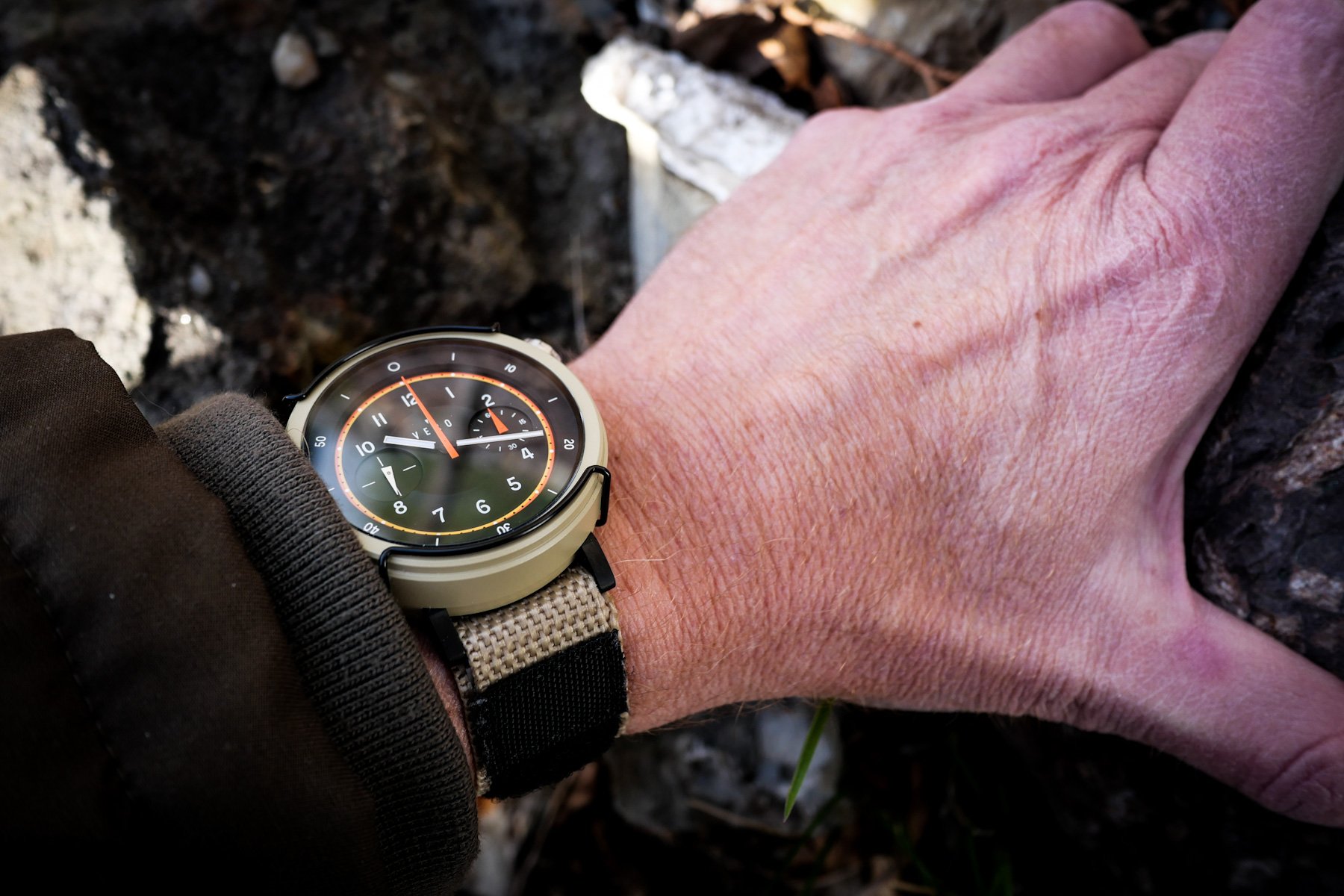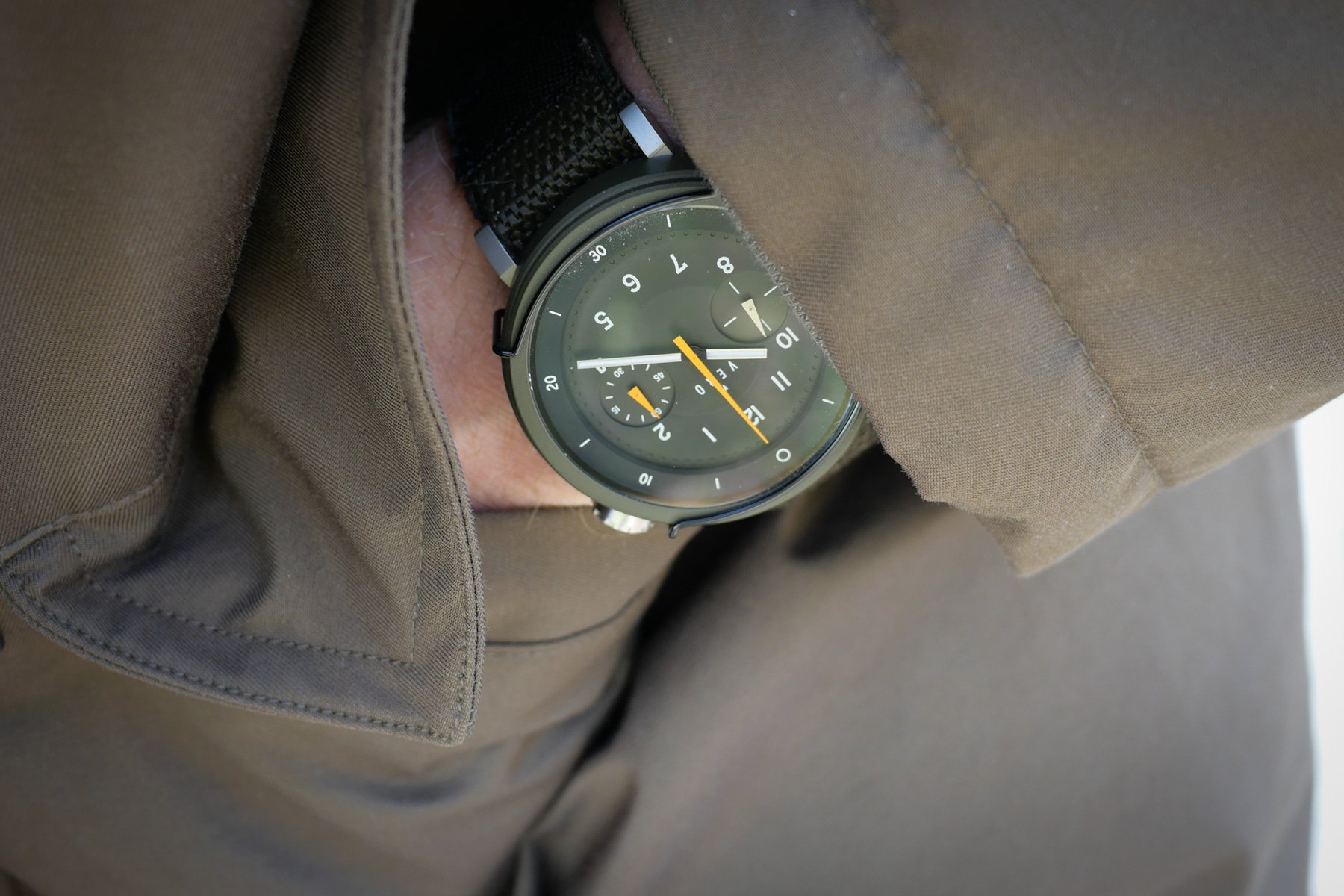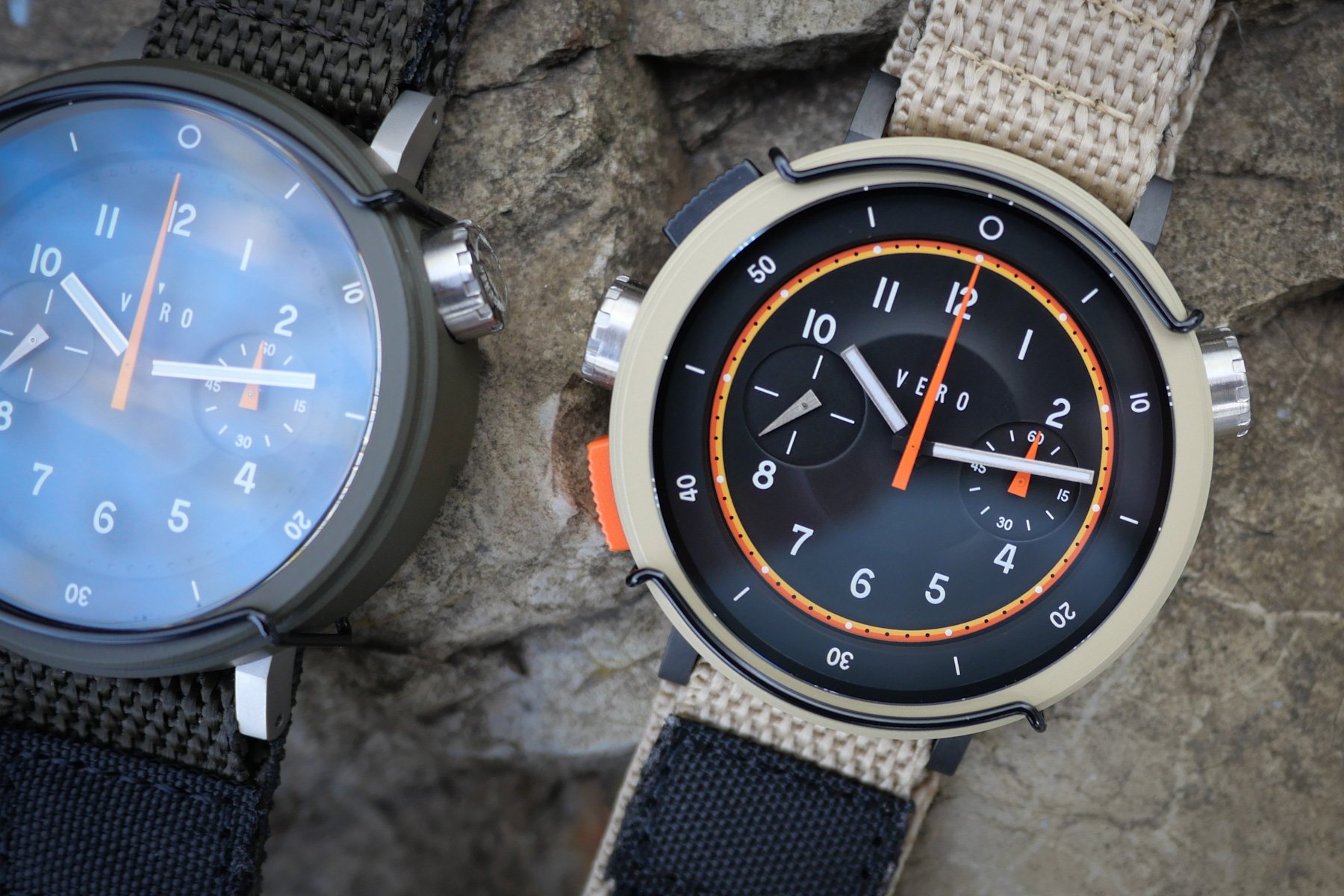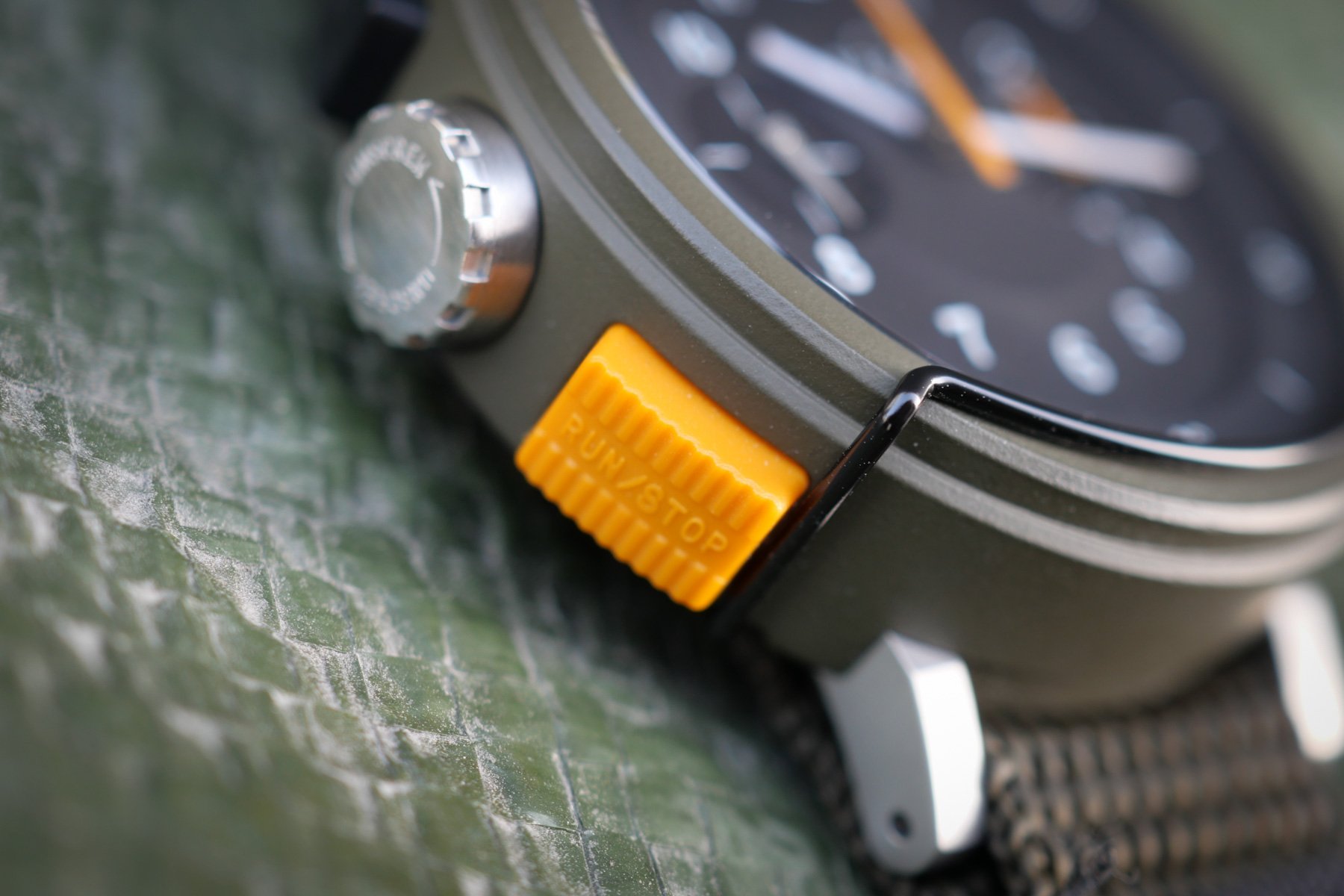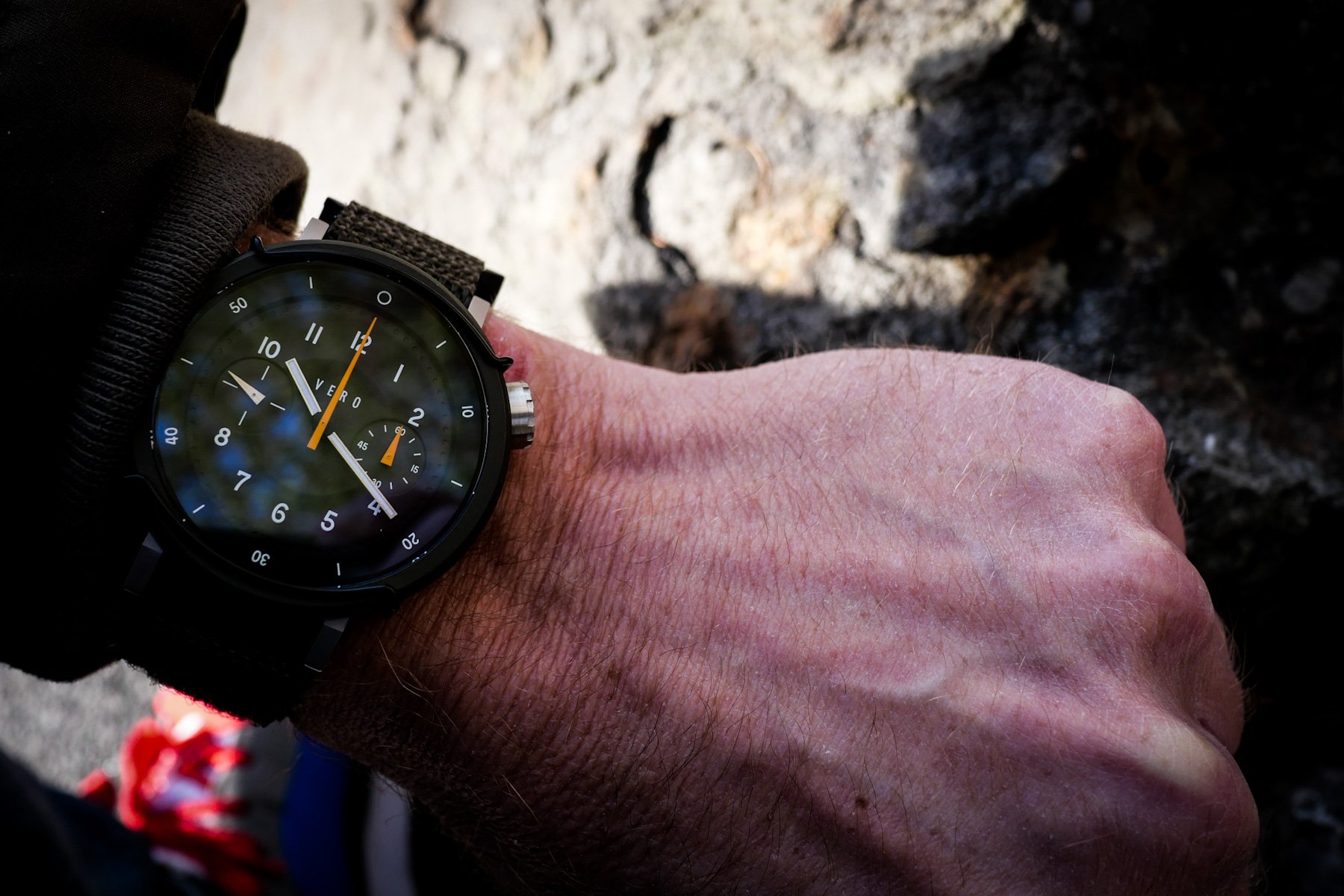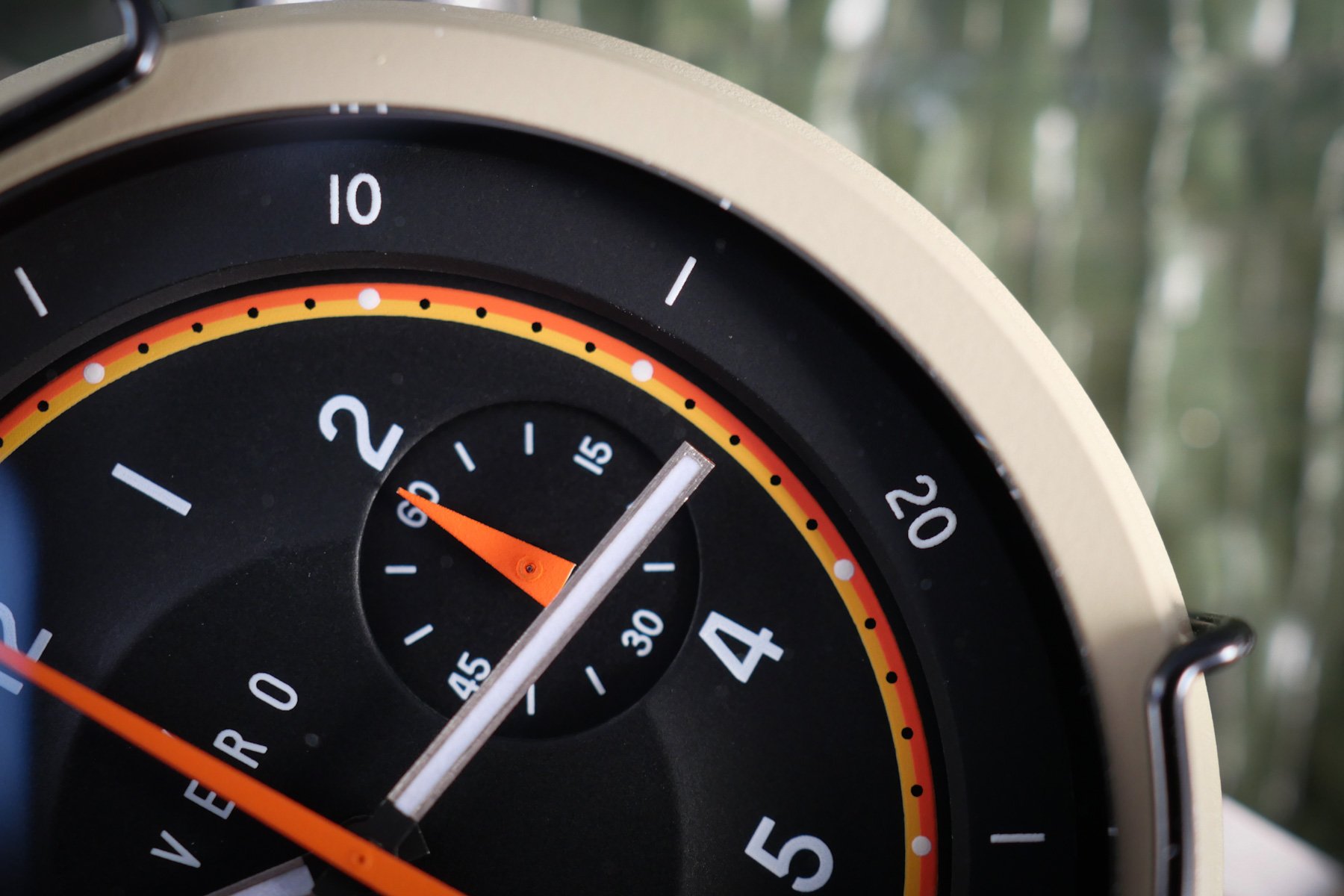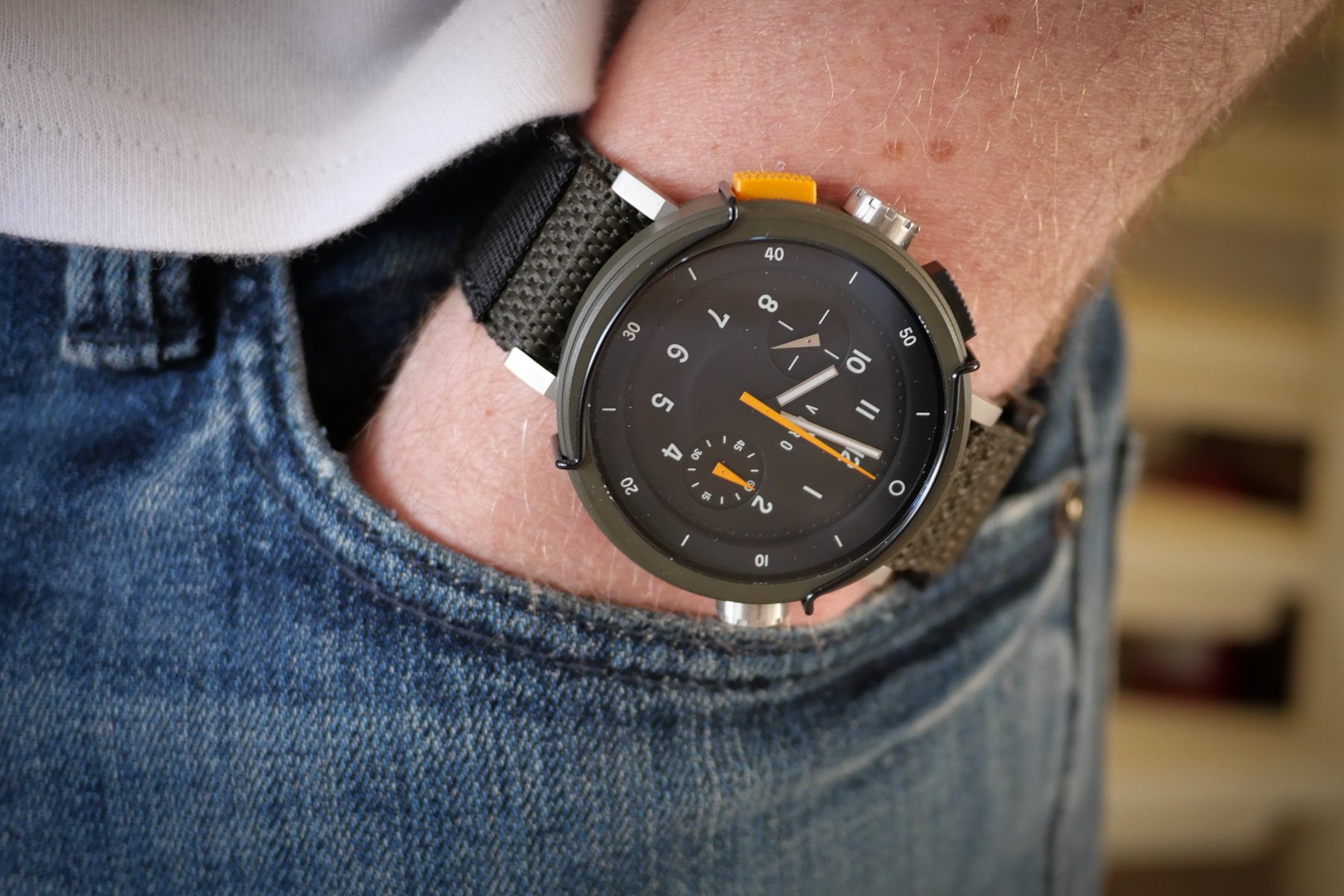The New Vero Workhorse — Could This Be The Best Microbrand Tool Watch Of 2022 So Far?
Yes, at 44.5mm the new Vero Workhorse is a large watch. I did try, but no shirt cuff will accept this big boy except my unbuttoned denim shirt. But despite its size, it looks like nothing else, that might be a winning formula. I enjoyed the first release from Vero Watches. The Open Water saw the brand on a path of tool-inspired watches with a very modern design language. And though it would have been much easier to go down the vintage route, I’m really glad that Vero chose not to. These facts and the functional comfort of the Workhorse make me wonder, is this the best microbrand tool watch of 2022 so far?
I am a big fan of vintage skin-diver aesthetics, it’s true. And surely, a field watch is a 38mm tough little nugget with a big crown and Arabic numerals, right? The moment I saw the Workhorse in a confidential Instagram message from Chris Boudreaux at Vero, I asked for more information. I saw this as nothing less than a potential game-changer. Does this sound like hype to you? Well, the explanation is simple. There is a reason the term “form follows function” was coined, and the Workhorse proves it rather well.
Have we seen this shape before?
If you’re into divers and Seikos, the case may look familiar, but that is the only similarity the Workhorse has with anything else. And I love writing that! The Workhorse might be tuna can-shaped, but looking closer, you see it has a character all its own. Unlike the over-engineered Seiko Tuna, the Workhorse doesn’t use a shroud — a cool but dirt-trapping Seiko design. Instead, the steel case of the Workhorse is ceramic-coated with Cerakote ensuring its trail-toughness. For Vero, the stepped round shape is a simple case (pun intended) of functional form. It allows for maximum use of the dial area with super-short lugs. Granted, they could have been omitted, but Chris Boudreaux of Vero knows we enjoy an occasional strap-change, which is made easy here. Not that it is necessary, as the strap in its two distinct flavors feels like an integral part of the watch.
Would you prefer desert camo or jungle-tactical, sir?
The large case makes this all about the dial, which is huge. Wearing it the day after my Doxa Sub 300 makes the Swiss diver’s dial seem the size of a shirt button, but it’s all good. The inner rotating 60-minute timing bezel has a smooth and solid feel, and the dial embodies accomplished design. The aesthetic language speaks to me on a graphic-design level, as well as for its focus on pure legibility. Do I have a favorite of the two models you see here? Nope. I seem to shift between the desert-cool Canyon and the more serious olive-and-black Backcountry. Each has an orange pusher matching the color of the chronograph seconds hand and the pointer on the minute register, but those on the Backcountry are a more muted tone. While the two Workhorses are the technically same, they each have their own particular characters, and the sand-colored Canyon is the more desert-fresh of the duo.
A mature dial design
The dial design is mature for a company as young as Vero, for sure. It speaks volumes of the brand’s dedication to making the Workhorse a resolutely modern design in a sea of vintage inspiration. Just inside the stepped rehaut is an inner satin-finished dial. This is framed by small minute indentations and a scalloped section for the hour numerals, and the two sub-dials are deeply recessed. The only thing I’d improve on is the lume, which is slightly weak on the hour and minute hands. The quality of execution is exemplary for a sub-$500 watch, and the bezel-less stepped case is a great example.
Orange zest and bumpers
The tactical-looking Backcountry has a flat sapphire crystal with a top-notch anti-reflective coating. This makes it different from the usual domed or box style, and it’s a choice that allows for exemplary readability. If you were unsure, this is a real tool watch, son. And though the Canyon uses the same great sapphire crystal, this version has its own character altogether, with darker orange touches and a bright, popping two-tone orange circle framing the inner dial. The Cerakote cases are simply great pieces of engineering, feeling rock solid and smooth to the touch. I might be tempted to take off the “bumpers” for a cleaner look, but overall, I love the integrity of the Vero design language. It takes a trained eye to make such a balanced yet complex design that doesn’t pick up on any homage clues. And as I get to know these two characters better, the value of their comfortable straps also becomes clear.
A 21st-century field watch
I am sure Chris’s goal here was to create the perfect 21st-century field watch. If so, then I must say, this is a success. But there is a tactical vibe here too, especially in the black-and-olive Backcountry. This is actually the first time I’ve tried this kind of Velcro strap for an extended period, and I’m into it. I can’t praise this nylon strap enough for its simplicity. The stubby lugs also make for great comfort, and the cleverly placed pushers and crown also help out big time. But why the lefty design? Well, time for an ergonomics class. This design is perfect for the 90% of people who are right-handed, believe me. Since the watch is powered by a reliable Miyota 6S21 quartz movement, the screw-in crown can be left alone. Its left-sided position allows for a large case without risking damage to the crown or scuffing the back of your hand. But does it work in real life?
But I’m not a lefty
In use, the haptics and intuitive functionality are great. The chronograph pushers are huge, striated, and have a satisfyingly short movement. Your thumb rests naturally against the orange start/stop button, making you wish every brand put it there in the first place. The second crown at 2 o’clock sets the inner 60-minute bezel, which helps when timing up to one hour for a walk, climb, or run. It’s intuitive, simple to use, and a well-thought-out idea. The top-class ergonomics are the icing on the cake. The black “bumpers” hugging the case at 12 and 6 o’clock are cool, but to be honest, not strictly necessary on that tough Cerakote case. But they are part of the rugged image that I’m drawn to, and like the nylon strap, they feel completely uncontrived.
A go-to workhorse
The term “workhorse” might sound cliché at this point. How many times have we heard the term “workhorse movement”? But here, it takes on its real meaning. Would one of these be my go-to piece for a trip into my Norwegian woods? Probably, and even for a spot of mountaineering. When used for its intended purpose, it does feel like a reinvented field watch. Of course, you could fit a mechanical movement within the large case. But, this is about tough reliability, not craftsmanship. The 6S21 quartz caliber from Miyota is this watch what a basic mechanical caliber would be in a ’50s tool watch. And at $425, I would say this is pretty darn good value for a rugged wrist-buddy. It’s one that might just inspire you to venture further into the unexplored wilderness of your choosing. The new Workhorse also features a 120m depth rating and comes with a 10-year warranty to boot. Check it out in both colors on the Vero website.
What about you, dear Fratelli? Are you more of an old-school mechanical field watch kinda guy? Or does this large but comfortable tool appeal to your sense of adventure? Let us know in the comments.
Find me and follow me at @thorsvaboe

